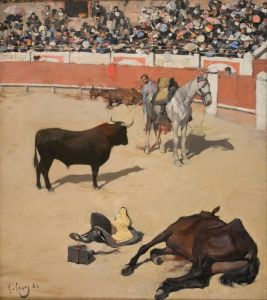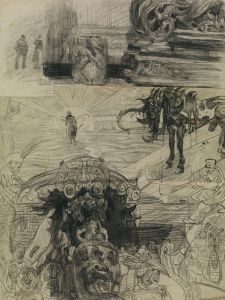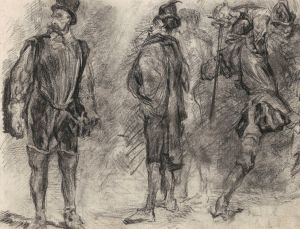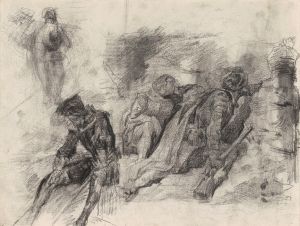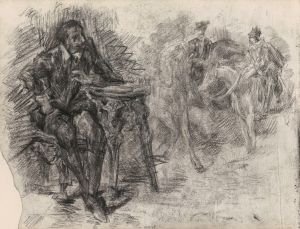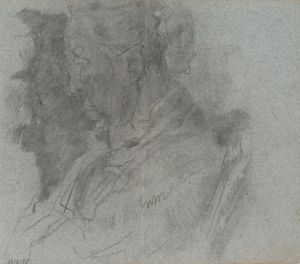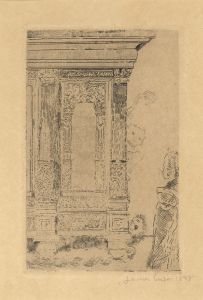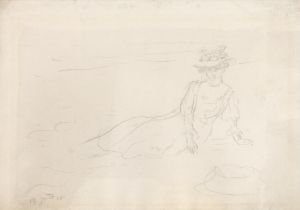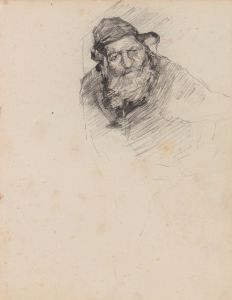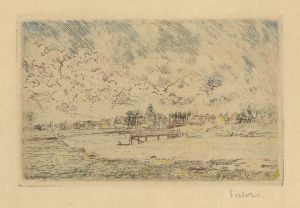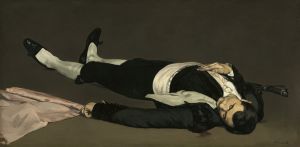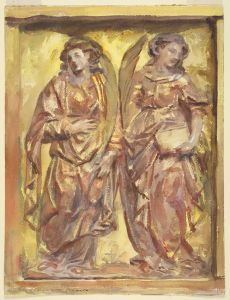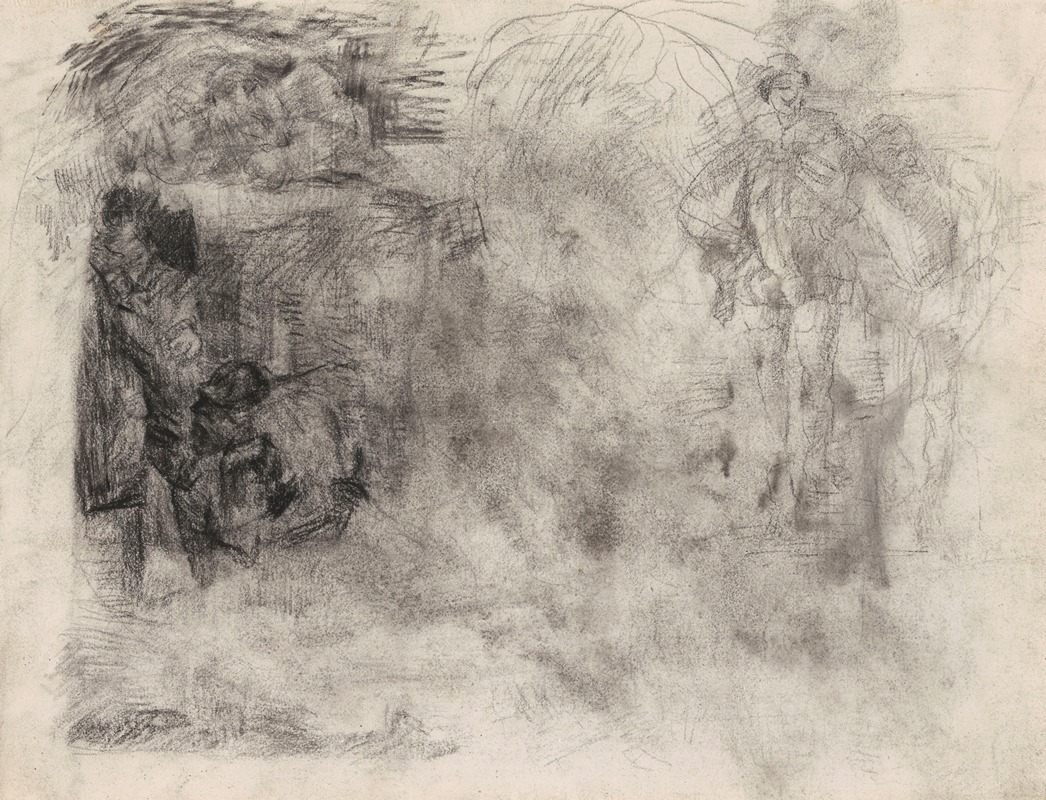
Don Quixote
A hand-painted replica of James Ensor’s masterpiece Don Quixote, meticulously crafted by professional artists to capture the true essence of the original. Each piece is created with museum-quality canvas and rare mineral pigments, carefully painted by experienced artists with delicate brushstrokes and rich, layered colors to perfectly recreate the texture of the original artwork. Unlike machine-printed reproductions, this hand-painted version brings the painting to life, infused with the artist’s emotions and skill in every stroke. Whether for personal collection or home decoration, it instantly elevates the artistic atmosphere of any space.
"Don Quixote" is a painting created by the Belgian artist James Ensor in 1900. Ensor, born in 1860 in Ostend, Belgium, was a prominent figure in the Symbolist movement and is known for his unique and often eccentric style that combined elements of realism, fantasy, and the grotesque. His works frequently explored themes of death, masks, and the absurdity of human existence.
The painting "Don Quixote" depicts the iconic character from Miguel de Cervantes' novel "Don Quixote," which was first published in two parts in 1605 and 1615. Cervantes' novel tells the story of a delusional Spanish nobleman, Don Quixote, who, inspired by chivalric romances, sets out on a series of misguided adventures with his loyal squire, Sancho Panza. The character of Don Quixote has become a symbol of idealism and the clash between reality and illusion.
In Ensor's interpretation, Don Quixote is portrayed in a manner that reflects the artist's distinctive style. The painting captures the essence of the character's quixotic nature, emphasizing his eccentricity and the surreal aspects of his adventures. Ensor's use of vibrant colors and expressive brushwork brings a sense of dynamism and intensity to the scene.
Ensor's "Don Quixote" is notable for its imaginative composition and the way it blends elements of fantasy with a keen observation of human folly. The painting is imbued with a sense of whimsy and satire, characteristics that are prevalent in much of Ensor's work. His portrayal of Don Quixote can be seen as a reflection of his own artistic philosophy, which often challenged conventional norms and embraced the absurd.
James Ensor's contribution to the art world extends beyond his paintings. He was also a significant influence on later avant-garde movements, including Expressionism and Surrealism. His work was recognized for its innovative approach and its ability to convey complex psychological and emotional states.
"Don Quixote" by James Ensor is housed in the Royal Museum of Fine Arts in Antwerp, Belgium. The museum holds an extensive collection of Ensor's works, providing insight into the breadth and depth of his artistic vision. Ensor's legacy continues to be celebrated for its originality and its impact on the development of modern art.
In summary, James Ensor's "Don Quixote" is a vivid and imaginative portrayal of the legendary literary figure, reflecting the artist's unique style and his fascination with the interplay between reality and illusion. The painting stands as a testament to Ensor's creative genius and his enduring influence on the art world.





